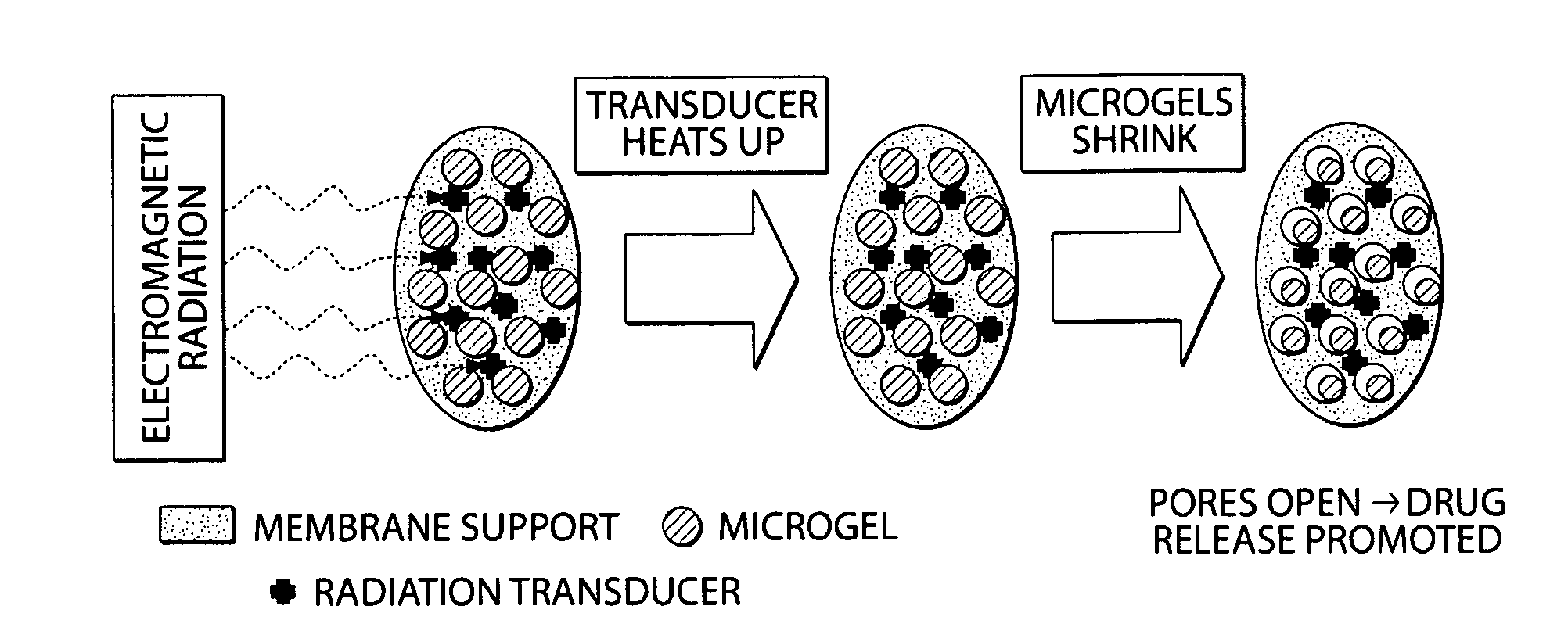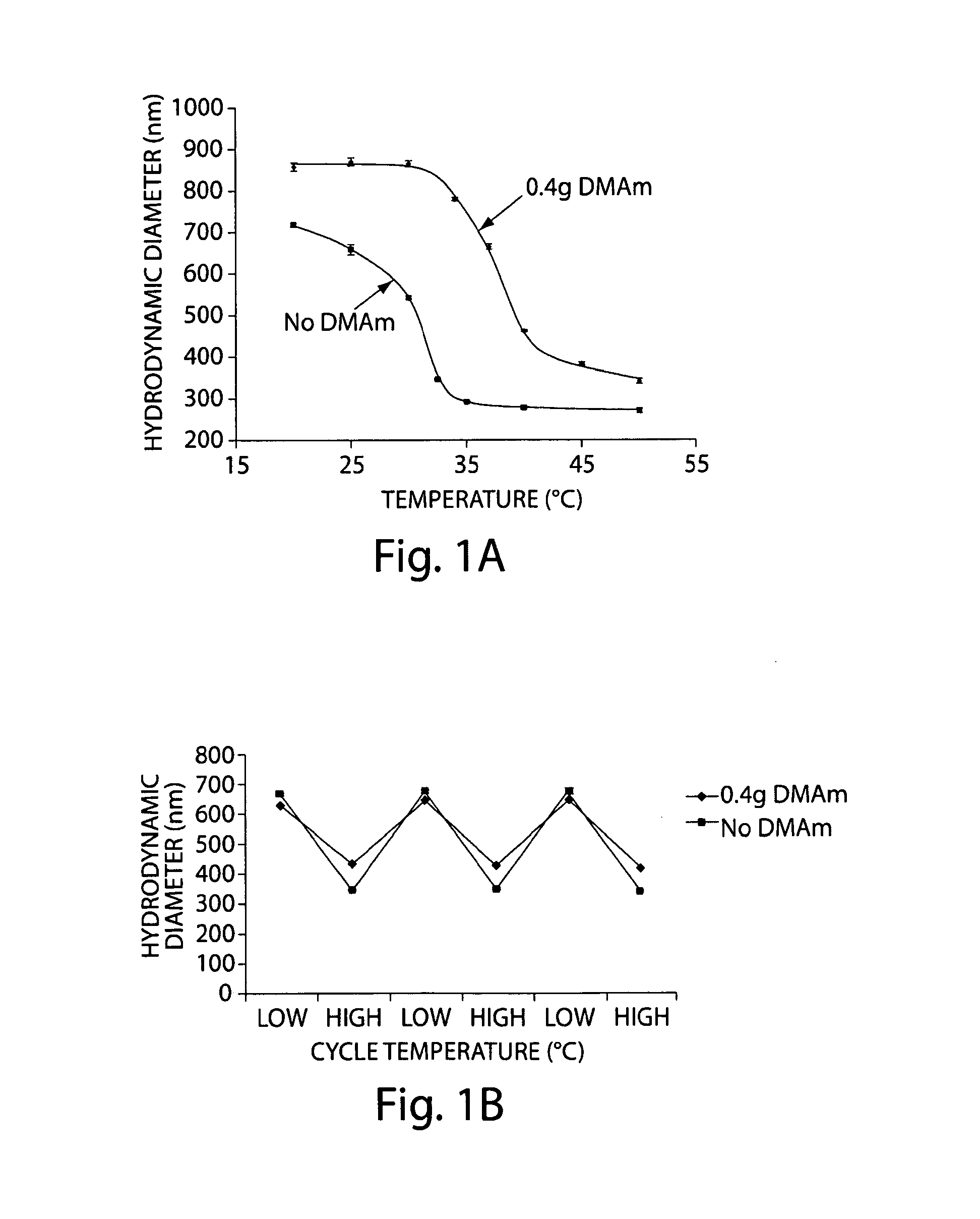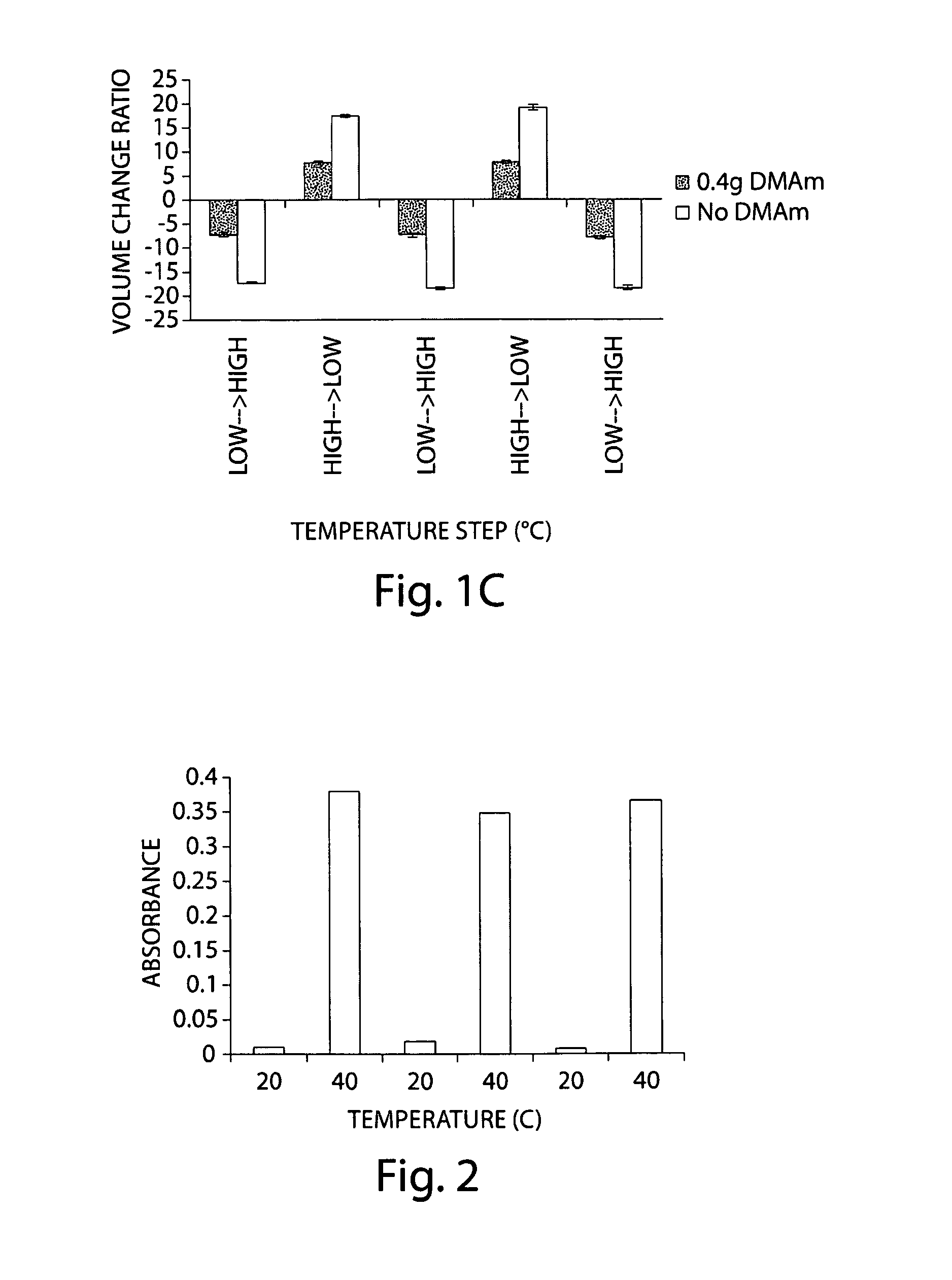Radiative heating for drug delivery and other applications
a technology of radioactive heating and drug delivery, applied in the direction of pharmaceutical delivery mechanism, bandages, disrupted materials, etc., can solve the problems of insufficient biological compatibility, inconvenient use, and inability to fully meet the requirements of the biologically compatible electronic circuit of the devi
- Summary
- Abstract
- Description
- Claims
- Application Information
AI Technical Summary
Problems solved by technology
Method used
Image
Examples
example 1
[0111]This example describes the design and fabrication of membranes with thermally triggered porosity. Stable, thermosensitive microgels were prepared using a surfactant-free polymerization. 1.4 g of N-isopropylacrylamide (NIPAM, the thermosensitive component) and 0.04 g of N,N-methylene(bis)acrylamide (MBA, the crosslinking monomer) were dissolved in 150 mL of distilled, deionized water. In cases where higher phase transition temperatures were desired, up to 0.9 g of dimethylacrylamide (DMAm), N-isopropylmethacrylamide (NIPMAM), or acrylamide (AAm) was also added to the polymerization. Increased DMAm, NIPMAM, or AAm loadings result in higher volume phase transition temperatures. The monomer mixture was heated to 70° C. under a nitrogen purge and 200 RPM magnetic mixing. After one half hour of temperature stabilization, a solution of APS (0.1 g / 10 mL water) was injected to initiate the polymerization. After 4 hours, the product microgel was cooled and dialyzed exhaustively against ...
example 2
[0117]This example describes the design and fabrication of membranes and drug delivery devices made thereof, which can be externally triggered to release a specific amount of a given drug at a desired site inside the body via the application of electromagnetic radiation. The application of an external heat source (including, but not limited to, direct resistive heating of a metal in a microwave field, antenna focusing of microwave radiation, or direct heating by a heating pad or bath) can be used to open the pores of a membrane in which the pores are filled with a network of thermosensitive gel particles, increasing the flux of a drug contained within the device reservoir. Such a device can allow for external, “on / off” temporal control of drug delivery in vivo with drug release in the “on” state exhibiting a constant, zero-order (or other) kinetics profile. This membrane and the associated device, in some embodiments, represent an electronics-free, implantable device, which can faci...
example 3
[0136]This example demonstrates the inertness of the membranes in cell and animal implant experiments. FIG. 13 shows results from an MTT metabolic activity assay on a range of different cell types likely to be present at or near the site of a subcutaneous or intramuscular implant (muscle cells, fibroblasts, macrophages, and mesothelial cells for peritoneal applications). The y-axis represents the ratio between the MTT signal from a well from cells exposed to the membrane compositions listed on the x-axis and the signal from cells (grown on the same plate), which were not exposed to any materials. Data was collected after 1 day of material exposure. In each case, the relative absorbance (normalized to cells grown in the absence of the membrane material) was approximately equal to one for all tested membranes with myotubes (differentiated muscle cells), fibroblasts, and mesothelial cells, suggesting that cell viability was not significantly impacted by the presence of the membrane or ...
PUM
| Property | Measurement | Unit |
|---|---|---|
| frequency | aaaaa | aaaaa |
| frequency | aaaaa | aaaaa |
| conductivity | aaaaa | aaaaa |
Abstract
Description
Claims
Application Information
 Login to View More
Login to View More - R&D
- Intellectual Property
- Life Sciences
- Materials
- Tech Scout
- Unparalleled Data Quality
- Higher Quality Content
- 60% Fewer Hallucinations
Browse by: Latest US Patents, China's latest patents, Technical Efficacy Thesaurus, Application Domain, Technology Topic, Popular Technical Reports.
© 2025 PatSnap. All rights reserved.Legal|Privacy policy|Modern Slavery Act Transparency Statement|Sitemap|About US| Contact US: help@patsnap.com



